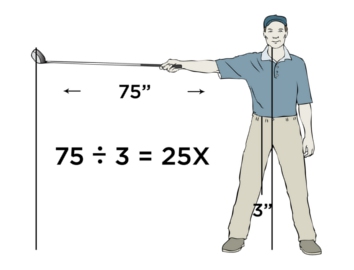This is an interesting article on it, check this out:
http://www.somaxsports.com/photo.php?analysis=federer-djokovic
"We have found that for every degree we increase the External Arm Rotation Angle, a player can add 1 mph to their serve.
Federer and Djokovic both serve about 130 mph tops.
Djokovic should have a 40 mph advantage, but he doesn't. We'll show you why later..."
Here is another Somax video on the serve from about 2010.
I have criticized this video in detail a few years ago.
It shows a helicopter model and speed increase from the hips out to the racket head. I don't see how the helicopter model applies to the serve if you consider the
internal shoulder rotation (ISR) and the location of the racket head relative to the hips rotating. More important is that, if the hips are thought to simply increase speed as shown, imagine looking at the direction of hip rotation viewing the server from above. The hips rotate in the counter clockwise direction for a right hander. Now consider the ISR direction of rotation from above, that's clockwise. If hip rotation and ISR are both being thought of as occurring at the same time, hip rotation is in the opposite direction of ISR rotation and would subtract from the rotation speed of ISR! But also peak hip rotation speed also occurs earlier than ISR and impact.
In the discussion of the 5 stages rocket analogy there is no hint of ISR mentioned. A stroke path is shown at 1:57, no ISR to be see or mentioned. "Tennis players launch their racket head in an orbit around their body." That is how it falsely looks in 2D videos from the side view. ISR is missing in the entire video, there is no mention of ISR.
The video also does not mention the
stretch shorten cycles where hip rotation does causes body rotation and stretching of trunk muscles - between the hips and uppermost body - well
before ISR or impact. If a serving video does not discuss or show ISR clearly, that is a very bad sign for the understanding of the biomechanics of the serve.
If you consider hip rotation and ISR together, the above video does not make sense. The geometry of the helicopter model illustrated with the arm and racket held straight out, does not resemble the body positions seen in the serve - arm and racket above the hips, not out from the hips. In short, for the helicopter analogy consider the rotation axis of the hips (pelvis), when that rotation occurs and the location and path of the racket head for impact. See also golf swing link below. For the tennis serve the axis of the pelvis rotation is about vertical and the arm (ISR) is mostly vertical not horizontal plus there are other body rotations with axes that are mostly horizontal. For the golf swing the axis of the pelvis rotation is about vertical and the axis of the golf swing is mostly horizontal and tilted up. For the helicopter model, the axis of the pelvis rotation is about vertical and the axis of the arm and racket is vertical. See 4:02-5:00 of the video. You can't use that model for the tennis serve or golf swing because the rotation axes are not aligned as in the helicopter/propellar model below.
Compare these spin axes to serve and golf swing.
Propeller picture.
http://www.swing-speed.com/images/Propeller-Swing-Speed.jpg
The video has 398,000 views. Read the comments.
See the publications of Bruce Elliott for a reasonable outline for the biomechanics of the serve.
Somax makes exercise equipment for the hips and has videos for several other sports.
http://www.somaxsports.com/video.php
Golf.
http://www.swing-speed.com/





